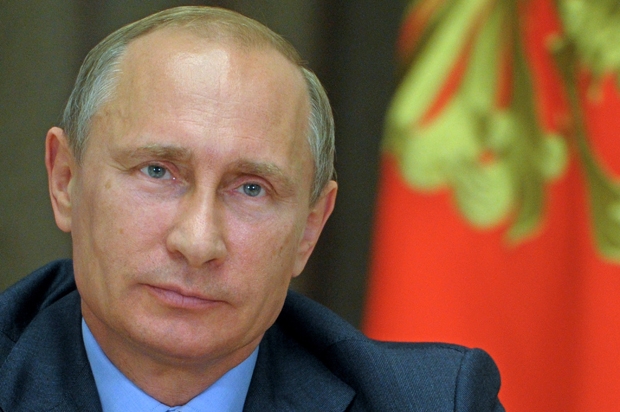An official end to the Cold War was declared at a summit between President George H. Bush and Mikhail Gorbachev on a Soviet cruise ship moored at Malta on 2 December 1989. It is only a matter of time before western governments will have to admit that it has recommenced. While the rhetoric against Islamic State has been at full volume for the past few months, a soft and diminishing response has greeted Vladimir Putin’s escalating aggression. It is as if, Crimea having been ceded, western governments want their citizens to think that the rest of Ukraine is settling down into a mere domestic disagreement. The truth is very different: Putin’s ambitions have not retreated an inch since March.
This week, the European Leadership Network published a report into 40 incidents of militaristic aggression by Russia during the past eight months. Together they constitute a huge escalation from the occasional skirmishes between Russian and Nato forces which continued after the end of the Cold War. From the Black Sea to the Baltic, the North Atlantic to the Pacific, Russia has engaged in what appears to be a deliberate and concerted effort to test the West’s defences. On four occasions, US and Swedish reconnaissance aircraft have been harassed by Russian fighters in international airspace. Russian fighters, unarmed, have buzzed US warships in the Black Sea. On one occasion Russian forces carried out what appeared to be a mock bombing mission on the Danish island of Bornholm — with planes turning away at the last moment. In September, Russian bombers appeared to stage a mock missile launch in the Labrador Sea. Most grave of all, an airliner en route from Copenhagen to Rome narrowly avoided a collision with a Russian fighter in the western Baltic; the fighter plane had not signalled its position to air traffic controllers. That near miss, we can assume, was an accident. But there is nothing accidental in the repeated targeting of the Baltic states in military exercises. On six occasions Estonia has reported violations of its airspace. In September, an Estonian security official was seized from a border post and taken to Moscow for questioning over accusations of spying. The incident registered as little more than a faint blip on the radar of news channels.
No one should underestimate the threat of terror attacks posed by IS. But that organisation does not pose an existential threat to any western nation. Putin does. Whether he has active plans or not, the pattern of incidents over the past six months suggests that he is at least carrying out a mental invasion of the Baltic states, to fit with his ominous declaration that the break-up of the Soviet Empire was a great tragedy. It is inconceivable that he has not asked himself: what if I invaded a Baltic state? Would article five of the Nato Treaty — which declares ‘an armed attack against one or more of them in Europe or North America shall be considered an attack against them all’ — be enacted or would the more powerful members of the alliance shuffle their feet and just mutter about sanctions?
The Russian economy has been greatly harmed by western sanctions imposed after the annexation of Crimea and the downing of flight MH17. Finance minister Anton Siluanov warned this week that sanctions, combined with a falling oil price, will cost Russia $140 billion this year. But it doesn’t necessarily follow that Putin will draw from this the conclusion that he needs to tone down activities in Ukraine in order to get the sanctions lifted and open up trade again with the West. It might lead him to the opposite conclusion: that Russia was better off when it was a closed empire. If you can’t open up to what you see as your natural markets, there is always the possibility — at least for a country the size and strength of Russia — of invading them. The challenge to the West is to make this an unthinkable option for Putin. There is really only one way to do this: to make felt the presence of western military might. It isn’t necessary to issue great threats; just to assert that Nato is still the organisation it was during the Cold War. At present, this is far from clear.
The eastward march of Nato was more of a branding exercise than a military one. There was no great deployment of firepower in the former Soviet bloc states; no extra troops were stationed east of the Elbe. This didn’t matter so long as Russia was fully engaged on a path towards democracy and the observation of international law. But under Putin Russia is pursuing a different path. Subtly but unmistakably, Nato needs to draw a new line in the sand along the borders of its easternmost neighbours. There are signs that this is happening.
Sweden was thought by the Russians to have been a possible weak spot in western defence, but Sweden’s response to incursion of its waters by a Russian submarine in September suggested otherwise. The Swedish navy pursued the submarine and threatened to use military action to bring it to the surface. A little more of that stern vigilance could go a long way. As in the Cold War, peace will best be assured when Russia is left under no illusions that invasion and expansion is not a sensible option.






Comments